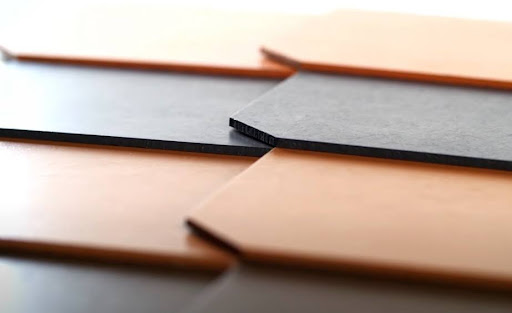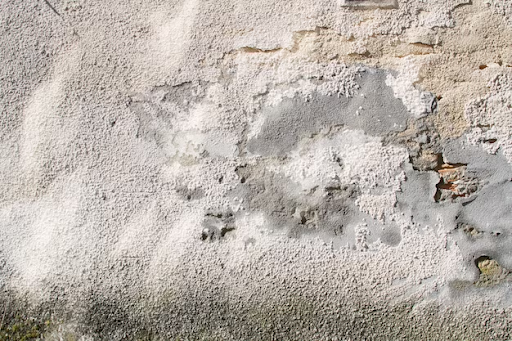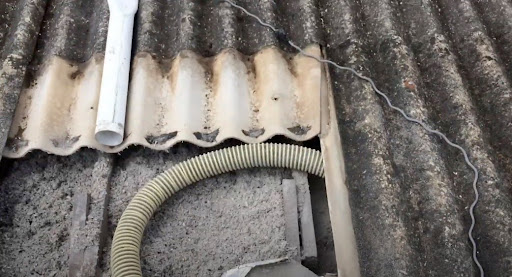Join us as we take a deep dive into the defining decade of architecture, the 1970s. This period witnessed an extraordinary ascent of fibre cement cladding material that became renowned for its durability and versatility in building design. Our brief introduction delves into how this innovation came to be closely associated with cutting-edge aesthetics in construction, influencing modern architectural practices even today. Discover the story behind fibre cement cladding’s rise to prominence within the world of architecture during this exciting era!
Understanding Fibre Cement Cladding

To begin our exploration of the architectural revolution that took place in the 1970s, we should first familiarize ourselves with fibre cement cladding. Essentially, this material is a common choice for covering commercial and residential building exteriors. It consists of cellulose fibers reinforced within cement to create a sturdy composite substance known for its resilience, adaptability, and low upkeep needs.
Why the 1970s?
The decade of the 1970s marked a pivotal period in architecture, defined by innovation and experimentation. Architects during this time were motivated to seek out materials that not only served practical functions with durability but also provided an extraordinary level of aesthetic adaptability. During such quest, fiber cement cladding emerged as a material suitable for meeting all their requirements; therefore became readily embraced throughout ten-year span.
- Versatility and Aesthetics: With its impressive array of textures, colors and finishes, fibre cement cladding proved to be an exemplary choice in both versatility and aesthetics. Architects were able to showcase their creativity by designing structures that showcased unique qualities while being visually stunning at the same time.
- Durability and Resistance: Apart from its visual charm, the demand for fibre cement cladding arose due to its exceptional attributes of durability and resistance. Its capacity to endure fire outbreaks, repel termites, and thwart decay made it a dependable preference among architects interested in constructing enduring edifices.
- Economic Viability: The widespread usage of fibre cement cladding in the 1970s was largely fueled by its economic viability. As opposed to other building materials, it provided a cost-effective solution that allowed architects and builders alike to implement their creative designs within budgetary constraints.
Key Projects and Architects
Fibre cement cladding, a building material known for its durability and versatility, became prominent in the 1970s through several iconic buildings. Here are two notable examples:
- Habitat 67 (Montreal, Canada) – Architect: Moshe Safdie: Originally conceived for the 1967 World Expo in Montreal, Habitat 67 is an iconic complex made up of prefabricated concrete forms stacked in various combinations. While not solely using fibre cement cladding, the material contributes to its innovative modular design and is a testament to the era’s architectural experimentation and the adaptability of fibre cement.
- Sydney Opera House (Sydney, Australia) – Architect: Jørn Utzon: Completed in 1973, the Sydney Opera House is one of the 20th century’s most famous and distinctive buildings. The sails of this architectural masterpiece are covered with over 1 million tiles, and while not fibre cement, the building’s use of innovative materials and techniques reflects the era’s architectural spirit. Its inclusion is important as it represents the broader context of architectural innovation during the time when fibre cement was also gaining popularity.
Both of these buildings, in their respective contexts, reflect the innovative spirit of the 1970s, exploring new forms and materials, including the use of fibre cement in various applications. These structures stand as testaments to the era’s architectural ambition and the material’s role within it.
Technical Advancements
The 1970s was also marked by significant advancements in the composition and production of fibre cement cladding. These innovations further enhanced the material’s appeal to architects and builders alike.
- Improved Durability: Ongoing research and development efforts led to innovations in fiber reinforcement and cement composition, resulting in fibre cement cladding that was even more robust and long-lasting.
- Easier Installation: Continuous advancements in the sizing and cutting of the panels made the installation process more efficient and accessible, reducing construction time and labor costs.
- Enhanced Aesthetics: The introduction of an even wider variety of textures and colors allowed architects to push the boundaries of design, giving rise to structures that were not only functional but also visually captivating
Environmental and Health Considerations
While fibre cement cladding was lauded for its advantages, the 1970s also marked the beginning of a more environmentally conscious approach to building materials. It’s important to note:
- Asbestos Use: Early forms of fibre cement cladding used asbestos fibers for reinforcement, which later led to health and safety concerns.
- Transition to Safer Materials: By the late 1970s, manufacturers began phasing out asbestos in favor of safer alternatives.
Impact on Modern Architecture
The legacy of fibre cement cladding from the 1970s continues to influence modern building practices. It remains a popular choice due to its continuous innovation, adapting to modern aesthetic demands and environmental standards.
- Sustainability Efforts: Current formulations are more eco-friendly and sustainable.
- Modern Aesthetics: Continual evolution in textures and colors to fit contemporary design trends.
Conclusion
The 1970s marked a significant era for fibre cement cladding, establishing it as a preferred material for architects and builders. Its legacy continues to shape modern construction, adapting to new challenges and preferences. As we look back, the rise of fibre cement cladding in the 1970s stands as a testament to the innovative spirit of the era, continuing to influence designs and constructions to this day.
FAQs
What is fibre cement cladding?
Fibre cement cladding is a building material made of cement reinforced with cellulose fibers, used primarily for exterior cladding and facade of buildings.
Why was fibre cement cladding popular in the 1970s?
It gained popularity due to its durability, versatility, and cost-effectiveness, aligning with the architectural trends and demands of the decade.
Are there any health concerns associated with fibre cement cladding?
Early forms of the material used asbestos for reinforcement, leading to health concerns. Modern fibre cement cladding is asbestos-free and considered safe.
Can fibre cement cladding be used in modern construction?
Yes, it continues to be a popular choice due to its durability, aesthetic flexibility, and improvements in environmental sustainability.
How do I maintain fibre cement cladding?
Regular cleaning and occasional repainting or refinishing, depending on the type of cladding, can maintain its appearance and longevity.




